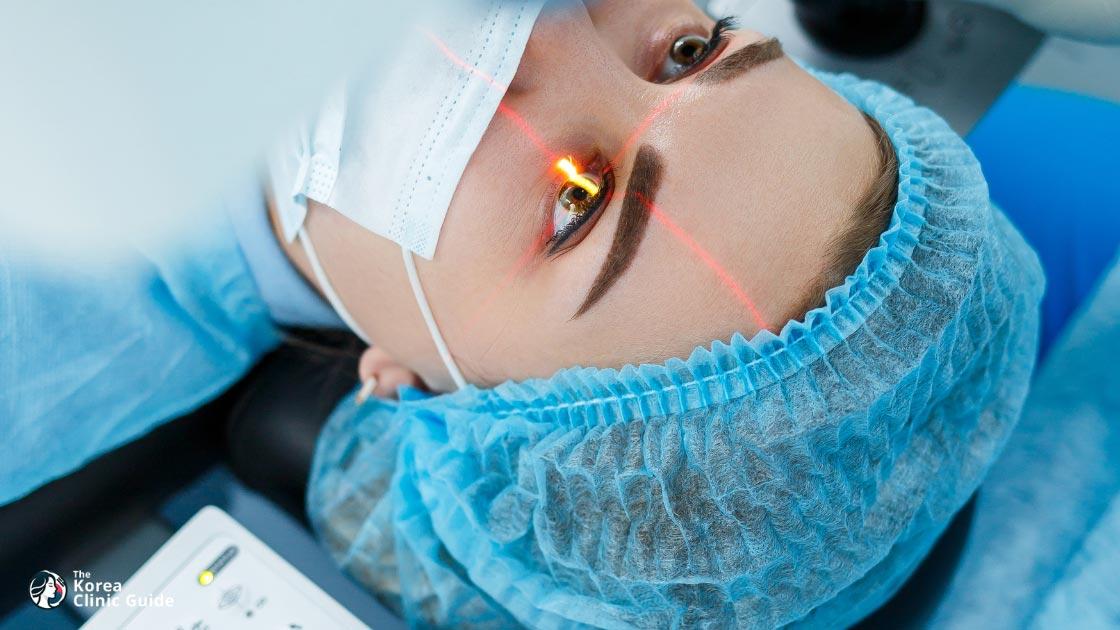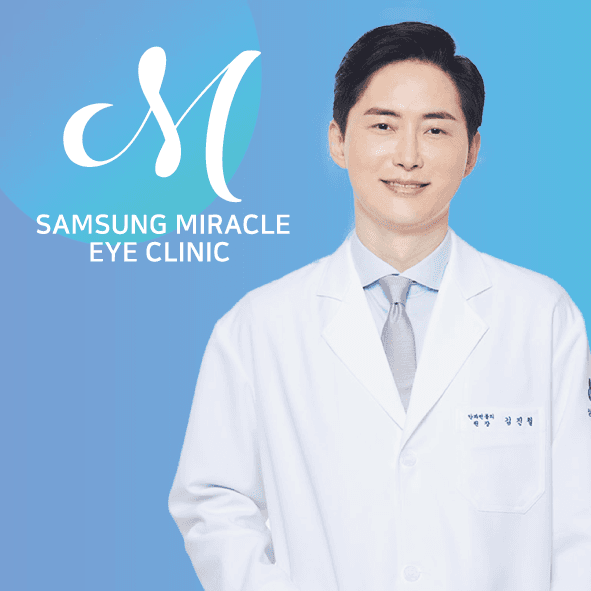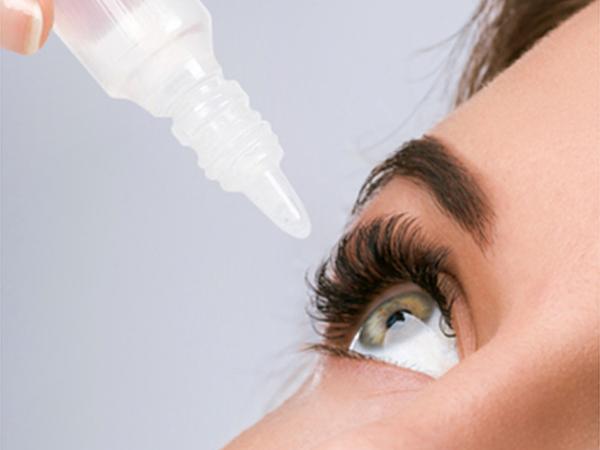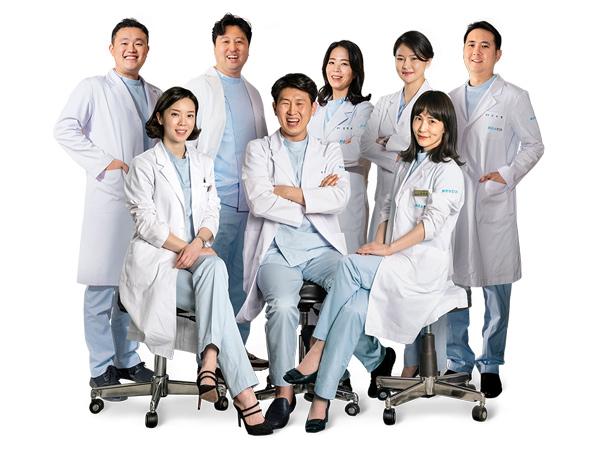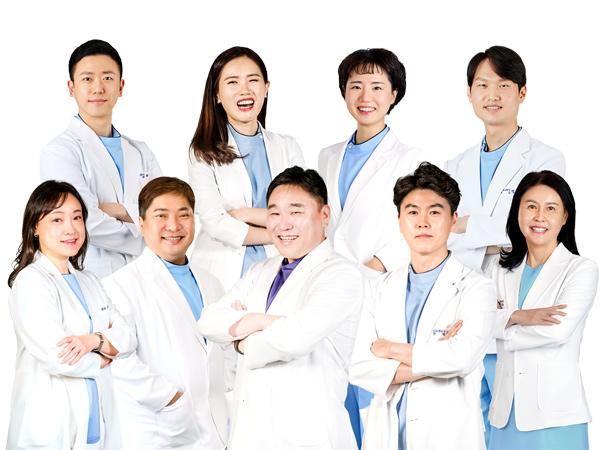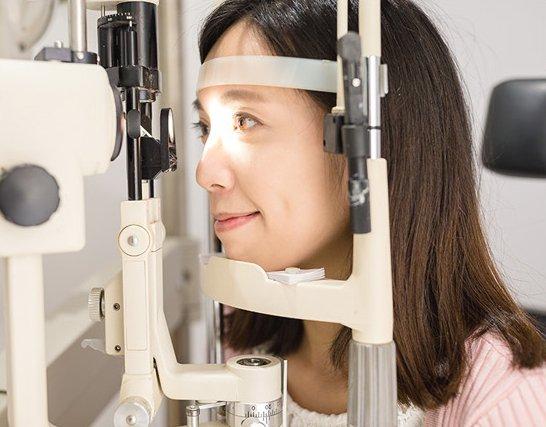Medical Tourism Blog
SMILE Eye Surgery in Korea | Best Clinics, Costs, Procedure Types & More

Table of contents
- What Is SMILE Eye Surgery?
- Best Clinics in Korea for Smile Eye Surgery
- SMILE Eye Surgery in Korea
- Alternatives to SMILE Eye Surgery
- Conclusion
Considering treatment in Korea? Everything you need to know e.g. — how to avoid scams, visas, interpreters, recovery tips — in our Medical Tourism Master Guide. Plan with confidence in minutes, not weeks!
Are you considering a vision correction procedure but wary of traditional laser surgeries? Discover how SMILE (Small Incision Lenticule Extraction) eye surgery is transforming the field with its minimally invasive approach and why Korea is quickly becoming a global leader in offering this revolutionary technology.
What Is SMILE Eye Surgery?
SMILE, or Small Incision Lenticule Extraction, is a cutting-edge laser eye surgery technique that is primarily used to treat myopia (nearsightedness) and astigmatism. This minimally invasive procedure was developed as an alternative to LASIK (Laser-Assisted In Situ Keratomileusis) and PRK (Photorefractive Keratectomy), offering several unique advantages over these more traditional forms of refractive surgery.
Procedure Types and Benefits
Unlike LASIK, which requires the creation of a corneal flap, SMILE involves creating a small, disc-shaped piece of tissue (lenticule) within the cornea using a femtosecond laser. This lenticule is then removed through a tiny incision, resulting in a change in the shape of the cornea that corrects the patient's vision. The smaller incision size of SMILE (2-4 mm compared to 20 mm for LASIK) contributes to a quicker recovery time and less disruption of the corneal nerves.
Who Can Benefit from SMILE Eye Surgery?
SMILE is suitable for patients who:
- Are aged 18 and older, with stable vision for at least a year.
- Have myopia ranging from -1.00 to -10.00 diopters and astigmatism up to 5.00 diopters.
- Have sufficient corneal thickness to undergo the procedure.
- Prefer a minimally invasive procedure with a quicker healing time.
- Have dry eyes, as SMILE may cause less dryness compared to LASIK.
However, not everyone is a candidate for SMILE surgery. Individuals with certain eye conditions such as keratoconus, severe dry eyes, or corneal scarring may not be eligible. It is crucial to undergo a thorough eye examination by a qualified ophthalmologist to determine suitability.
Pros and Cons of SMILE Eye Surgery
Pros
- Minimally Invasive: The smaller incision size leads to a quicker recovery and less interruption to daily activities.
- Less Dry Eye: Since SMILE does not involve the creation of a large corneal flap, there is less incidence of dry eye syndrome post-surgery.
- Reduced Risk of Complications: Fewer chances of flap-related complications such as dislocation or epithelial ingrowth.
- Precision: The femtosecond laser used in SMILE offers high precision, leading to more accurate visual outcomes.
- Stability: Patients often experience stable, long-term visual acuity post-surgery.
Cons
- Limited Treatable Range: SMILE is not currently suitable for hyperopia (farsightedness) or certain severe astigmatisms.
- Technological Expertise: Requires highly specialized equipment and training, making it less commonly available than LASIK.
- Potential for Residual Errors: There is a chance of under-correction or over-correction, which might necessitate additional surgery.
- Cost: The advanced technology used in SMILE can make it more expensive compared to other refractive surgery options.
- Longer Visual Recovery: Some patients may experience a slightly longer period to achieve their best vision compared to LASIK.
By understanding the comprehensive details of SMILE eye surgery, potential patients can make an informed decision about whether this advanced procedure is the right choice for their vision correction needs.
Best Clinics in Korea for Smile Eye Surgery
Listed below are the best clinics in Korea for smile eye surgery:
| Clinic Name | Key Features | Special Techniques |
|---|---|---|
| Samsung Miracle Eye Clinic | Ambidextrous SMILE surgeons with equal precision in both eyes; 1:1 personalized care with the same doctor handling examination, surgery, and follow-up; One-Day System with in-house diagnostics and a patented Miracle Formula for same-day diagnosis and surgery; Dedicated International Patient Team; Comprehensive services under one roof (SMILE LASIK; LASIK/LASEK; presbyopia and cataract treatments including intraocular lens insertion; dry eye management; Dream Lens (orthokeratology); re-calibration surgery); Convenient Gangnam Station location in Seoul | SMILE; ambidextrous technique for centration; Miracle Formula lens power calculation; 1:1 personalized care; Dream Lens (orthokeratology); One-Day System; re-calibration surgery; comprehensive in-house services |
| BGN Eye Clinic Jamsil | Cutting-edge vision correction with SMILE and SMILE PRO; pre- and post-surgery instructions for safety and outcomes; LASIK for reshaping the cornea; LASEK for thinner corneas; Implantable Collamer Lens (ICL) for higher myopia and astigmatism; cataract surgery with monofocal intraocular lenses; presbyopia surgery with multifocal intraocular lenses | SMILE; SMILE PRO; LASIK; LASEK; ICL; cataract surgery with monofocal IOL; presbyopia surgery with multifocal IOL |
| BnVIIT Eye Clinic | Over 30 years of experience with 550,000+ successful eye surgeries; cutting-edge AI Vision Correction Prediction System; advanced SMILE eye surgery; thoughtful preoperative evaluation and precise treatment planning; all-laser LASIK; all-laser LASEK (PRK) for thinner corneas; phakic intraocular lenses (PIOL) for higher refractive errors; cataract surgery with artificial intraocular lens; orthokeratology (Ortho-K) for overnight reshaping | AI Vision Correction Prediction System; SMILE; all-laser LASIK; all-laser LASEK; PIOL; Ortho-K; cataract surgery with IOL |
Samsung Miracle Eye Clinic
Samsung Miracle Eye Clinic, located at Gangnam Station, is a premier destination for SMILE eye surgery and comprehensive vision care in Korea, combining a highly professional medical team with advanced technology and true continuity of care. The clinic’s ambidextrous surgeons operate with equal precision in both eyes, and its 1:1 personalized model ensures the same doctor handles your examination, surgery, and recovery. With an efficient One-Day System powered by in-house diagnostics and a patented Miracle Formula for precise lens power calculation, plus a dedicated International Patient Team, Samsung Miracle Eye Clinic delivers convenience, consistency, and outcomes that make it a top choice for patients seeking SMILE.
- Ambidextrous surgeons for SMILE: equal precision in both eyes enables quick, precise removal of corneal stroma while minimizing contact with the nasal bridge, supporting a smoother procedure, enhanced comfort, and faster recovery.
- Perfect symmetry and accuracy: ambidexterity helps achieve consistent centration and alignment across both eyes, a key advantage for SMILE outcomes.
- 1:1 personalized care: every patient receives a tailored consultation and customized surgical plan; the same doctor performs your exam, surgery, and follow-up for consistency, accountability, and optimized results.
- One-Day System: in-house diagnostics and a patented Miracle Formula enable same-day diagnosis and surgery without compromising accuracy—ideal for busy schedules and travelers.
- Dedicated International Patient Team: coordinated support ensures the same standard of quality, comfort, and convenience for patients from abroad.
- Comprehensive services under one roof: SMILE LASIK; LASIK/LASEK; presbyopia and cataract treatments including intraocular lens insertion; dry eye management; Dream Lens (orthokeratology); and re-calibration surgery for fine-tuning prior corrections.
- SMILE advantages at this clinic: minimally invasive vision correction with quicker recovery and less discomfort compared to traditional LASIK, delivered by surgeons trained for symmetry and safety.
- Convenient Gangnam Station location: easy access in Seoul, backed by advanced technology and a multidisciplinary eye care team.
You can check out their website here: Samsung Miracle Eye Clinic Website
BGN Eye Clinic Jamsil
BGN Eye Clinic Jamsil is a premier eye care center in Korea offering cutting-edge vision correction with a strong focus on SMILE eye surgery. The clinic provides both SMILE (Small Incision Lenticule Extraction), a minimally invasive procedure for correcting myopia and astigmatism, and SMILE PRO, an advanced version designed for greater precision and faster recovery. Patients receive detailed pre- and post-surgery instructions to support safety and optimal outcomes.
Beyond SMILE, BGN Eye Clinic Jamsil offers a comprehensive suite of options tailored to individual needs, including LASIK for reshaping the cornea, LASEK for those with thinner corneas, and Implantable Collamer Lens (ICL) for higher degrees of myopia and astigmatism, especially when corneal thickness is a concern. The clinic also provides cataract surgery with monofocal intraocular lenses for clear distance vision and presbyopia surgery with multifocal intraocular lenses to enhance both near and distance focus.
Find more about this clinic here: BGN Eye Clinic Jamsil Website
BnVIIT Eye Clinic
B&VIIT Eye Center in Gangnam is a premier ophthalmology clinic with over 30 years of experience and a track record of 550,000 successful eye surgeries. Renowned for its cutting-edge A.I. Vision Correction Prediction System, the center offers advanced SMILE eye surgery—a minimally invasive procedure in which a laser creates a small, lens-shaped piece of tissue within the cornea that is removed through a tiny incision to correct vision—alongside thoughtful preoperative evaluation and precise treatment planning.
Beyond SMILE, B&VIIT provides a comprehensive range of vision correction options, including all-laser LASIK, all-laser LASEK (PRK) for those with thinner corneas, and phakic intraocular lenses (PIOL) for higher refractive errors not suited to laser procedures. The clinic also performs cataract surgery with artificial intraocular lens implantation and offers orthokeratology (Ortho-K) for overnight corneal reshaping. With robust customizing options, treatments are tailored to each patient’s visual needs and lifestyle to help achieve optimal results and satisfaction.
Find more about this clinic here: BnVIIT Eye Clinic Website
SMILE Eye Surgery in Korea

Korea has become a prominent destination for advanced medical procedures, with SMILE eye surgery standing out as one of the most sought-after treatments. SMILE, which stands for Small Incision Lenticule Extraction, is a minimally invasive refractive eye surgery that provides an effective alternative to LASIK and PRK. Here is a detailed look at what you can expect when coming to Korea for this cutting-edge procedure.
Preparing for Your Trip
When planning your trip to Korea for SMILE eye surgery, the first step is to select a reputable clinic or hospital. Korean medical facilities are known for their state-of-the-art technology and highly trained specialists. Most clinics have an international patient department that can assist with travel arrangements, accommodation, and translation services. Ensure that you have all necessary medical records and documentation prepared in advance.
Consultations and Preoperative Evaluations
Your medical journey will typically begin with a thorough initial consultation. This includes a comprehensive eye examination to determine your eligibility for SMILE surgery. Tests may involve corneal thickness measurements, eye pressure testing, and detailed mapping of your corneal surface. During this phase, your surgeon will discuss your medical history, the specifics of the procedure, potential risks, and benefits.
The Procedure
SMILE surgery itself is remarkably quick, often lasting less than 30 minutes. On the day of the surgery, you'll be led into a sterile operating room where numbing eye drops are applied to ensure you feel no discomfort. Using a femtosecond laser, the surgeon creates a small lens-shaped piece of tissue (lenticule) within the cornea. This lenticule is then extracted through a tiny incision, reshaping the cornea and correcting refractive errors.
Patients generally find the procedure to be pain-free, with little to no sensation during the surgery. The minimal invasiveness of the SMILE technique means there is no need for creating a corneal flap as with LASIK, which significantly reduces the risk of complications and accelerates the healing process.
Postoperative Care and Recovery
After the procedure, you will rest briefly at the clinic, allowing the initial effects of the surgery to be monitored. You'll be given eye drops to prevent infection and reduce inflammation. It's important to follow your surgeon’s postoperative instructions meticulously, which may include using protective eyewear and avoiding activities that could strain your eyes.
The recovery period for SMILE surgery is typically swift. Most patients notice an improvement in their vision within a few days, with further clarity developing over the following weeks. Follow-up appointments will be scheduled to monitor your progress and ensure optimal healing.
Cultural Experience and Comfort
Korea is not only renowned for its medical expertise but also for its rich culture and hospitality. Many patients use the opportunity to explore the vibrant life in cities such as Seoul or Busan. English-speaking coordinators often help international patients navigate cultural nuances and the bustling urban landscape.
Korean cuisine, historic sites, and shopping districts offer a delightful diversion during your recovery days. The local people are welcoming, and public transport is efficient, making it easy to travel around even if you're new to the country.
Cost Considerations
One of the appealing aspects of undergoing SMILE eye surgery in Korea is the cost-effectiveness combined with high-quality care. The overall expenses, including the procedure, accommodation, and travel, often total less than the costs of similar surgeries in Western countries. Many clinics offer packages tailored to international patients, providing comprehensive care at competitive rates.
By choosing to undergo SMILE eye surgery in Korea, patients benefit not only from advanced medical treatment but also from a supportive environment that enhances the overall experience.
Alternatives to SMILE Eye Surgery
When considering corrective eye surgery, there are several alternatives to SMILE (small incision lenticule extraction) that patients might explore. Each has its unique benefits and may be recommended based on specific conditions or preferences. Here are three popular alternatives:
LASIK (Laser-Assisted In Situ Keratomileusis)
LASIK is perhaps the most well-known laser eye surgery. This method involves creating a thin flap in the cornea, folding it back, and then reshaping the corneal tissue underneath using an excimer laser.
- Procedure: A femtosecond laser or a microkeratome is used to create a small flap in the cornea. This flap is then lifted to allow an excimer laser to reshape the cornea for improved vision.
- Treatment Scope: LASIK can correct myopia (nearsightedness), hyperopia (farsightedness), and astigmatism.
- Recovery: Recovery is typically quick, with many patients noticing improved vision within a day or two. However, it is essential to protect the cornea flap from dislocating.
PRK (Photorefractive Keratectomy)
PRK is another type of laser vision correction that predates LASIK. Unlike LASIK, PRK does not involve creating a corneal flap.
- Procedure: In PRK, the outer layer of the cornea (the epithelium) is removed entirely to expose the area for laser reshaping. An excimer laser then reshapes the cornea.
- Treatment Scope: Like LASIK, PRK can effectively treat myopia, hyperopia, and astigmatism.
- Recovery: Recovery takes a bit longer than LASIK since the epithelium needs to regrow, typically around a week. Patients may experience some discomfort and blurred vision during the initial healing period.
LASEK (Laser Epithelial Keratomileusis)
LASEK combines elements of both LASIK and PRK. It involves creating a very thin flap from the epithelium, which is retracted so that the excimer laser can reshape the cornea.
- Procedure: The surgeon loosens the epithelial layer with an alcohol solution and folds it back to access the cornea for laser treatment. After the excimer laser reshapes the cornea, the epithelial layer is repositioned, facilitating a more natural healing process.
- Treatment Scope: LASEK is suitable for patients with thinner corneas, offering an option for those who might not be candidates for LASIK. It also treats myopia, hyperopia, and astigmatism.
- Recovery: Recovery is somewhat intermediate between LASIK and PRK. Vision improvement and healing might take a few days to a week, with some initial discomfort as the epithelium heals.
Each of these alternatives to SMILE eye surgery has its advantages and suitability criteria. It is essential to consult with an eye care professional to determine the most appropriate option based on individual eye conditions, lifestyle needs, and vision correction goals.
| Procedure Price | Korean Won (₩) | USD ($) |
|---|---|---|
| Low Price | ₩2,800,000 | $2000 |
| High Price | ₩6,000,000 | $4400 |
Exchange rate as of 2025-05-22: 1 KRW = 0.0007 USD
Please note that these prices are approximate guidelines and can vary significantly based on the clinic and your individual circumstances.
Conclusion
In conclusion, SMILE eye surgery in Korea represents a significant advancement in corrective eye procedures, offering numerous benefits such as minimal invasiveness, quick recovery, and enhanced precision. As Korea continues to establish itself as a global leader in medical technology and innovation, patients from all over the world are increasingly turning to Korean eye clinics for this state-of-the-art treatment. With cutting-edge facilities, highly trained surgeons, and a strong emphasis on patient care, Korea proves to be an ideal destination for those seeking the most effective and efficient vision correction solutions available today. Whether for convenience, cost, or quality, SMILE eye surgery in Korea stands out as a premier choice for achieving clearer vision and a better quality of life.
